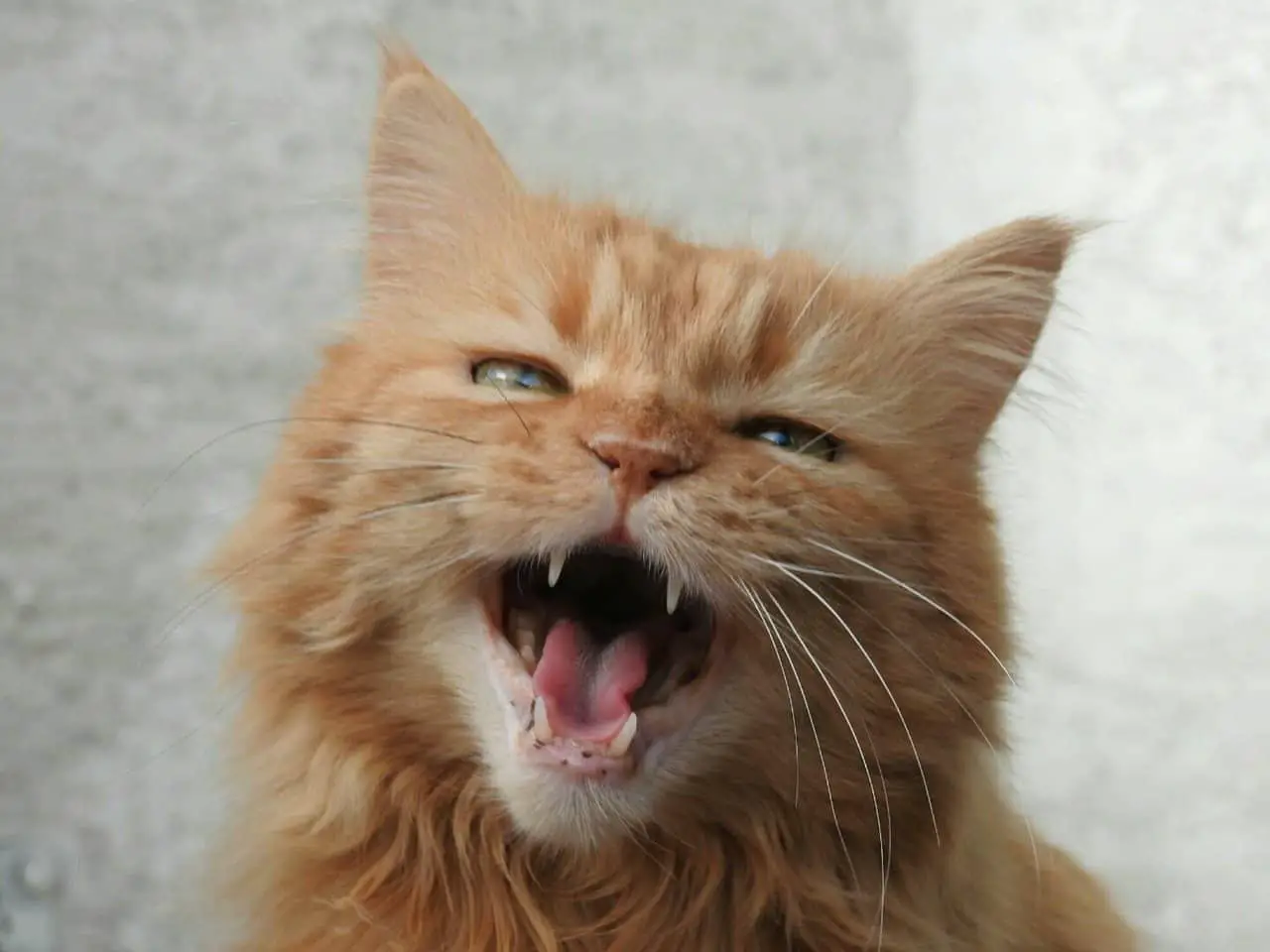Did you know that your cat indeed talks to you? Well, he does and has several ways one of them is meowing at you. Well, if you know your cat you have probably learned a few things about him. We assume responsibility for taking care and feeding out cats when we bring them home with us.
Therefore, cats figure out a way to communicate their needs with us. This means that we need how to understand cat talk so that we can be able to meet our cat needs. In this article, we are going to discuss the basic cat talk that you should understand when adopting a kitty.
[su_box title=”Are You in a Hurry?”]If you should be short of time as most of us are then, without having to read through the below article you can just click here and listen to a short video that will tell you all you need to know about Cat Speak. I know you will be pleasantly surprised.[/su_box]
Main methods of cat talk you must understand
Cats have different methods of communication. However, meowing is exclusively reserved to us humans which means that we constantly have to learn what different meows mean. When cats are communicating with their counterparts, they will use other body languages as well as scents.
If you are running a multi-cat home, you will be able to recognize these communication cues every now and then. Below, we are going to explore how to understand various types of cat talk.
Vocalization
Before you can bring a cat home, you should spend some time learning cat talk. Well, this is not going to be difficult as we have outlined below. Cats will meow when they want something from us. Below, we are going to look at the most common meows you are going to get from your cat.

Hungry meow
As we have mentioned above, your cat will meow at you when he needs something. And since we assume the responsibility to feed our cats. Usually, when your cat is hungry, he is going to give you that mid pitched meow.
We insist that you develop a routine from the very first day you bring your kitty home. This way, he will adapt to feeding at the same times each day. Well, if you live on your own, then you will have to figure out a way to ensure that your cat feeds throughout the day.
You can be able to do this by purchasing a food puzzle. It is going to be interesting enough to keep your cat busy and also to ensure that your cat feeds throughout the day. Note that cats feed multiple times per day, unlike dogs. Be sure to provide clean drinking water for him as well as the litter box.
Your cat is likely to meow at you when he is demanding to get into another room and he cannot. Perhaps you are in the bedroom and your cat wants to join you there. He will give you a similar meow to that of when he is hungry. If you delay providing your cat with he wants, your cat might give you a nagging long-drawn-out meow. This is usually when he is emphasizing on his needs.
Fearful/sick cat meow
When you bring a kitty home, there is a possibility that he is going to be afraid. I mean, he is in a new environment and around new faces and maybe practices. This may breed feelings of fear as well as anxiety.
As a result, your new kitty will develop stress and might keep meowing through the day and even at night. When a cat is stressed out, you will occasionally hear him meow in a low pitch.
In some cases, this can also be generated from fear. For instance, if your cat is facing a threatening situation, he is going to react and also communicate. He is probably trying to alert you that something is not right.
In homes where you also have a dog in the house, it can be a little uncomfortable for your cat, especially for the first few days. However, most cats end up adapting to co-existing with dogs and other pets in the household.
If your cat won’t keep calm, you should definitely check on him. Examine him and determine whether he is doing okay as sometimes the low-pitched meow could mean that your cat is sick.
You should always have a routine that includes spending time with your kitty. This way, you can be aware if there are any changes in his general behavior. A fearful cat might appear restless and also vocal.
. This is going to sound more like the long-drawn-out meow.
Aggressive cat
Even though our cats are social and will rarely show any aggression towards us you will observe him express agitation at some point. This is usually directed at the opponent, perhaps another cat or dog in the house. Once again, if you are running a multicat home, I am sure you have experienced this.
An angry cat will snarl and hiss at his opponent. Cats fight when they feel like another cat or pet is crossing into his territory. In fact, most catfights are usually about territorial behavior. However, if you hear your cat hissing and even snarling, it is wise to check it out. Usually, the cat is quite upset or feels threatened.
Even though we do take care of cats due to domestication, we cannot also forget that they are also wild animals. This means that your cat still has his animal instincts with him. Therefore, when he feels threatened in his own compound, he is going to react with the fight/flight reflex. Your cat is prepared to defend his home and thus the aggressiveness.
When you are running multi-cat fights, it is likely for cats to fight for their boundaries and even food and other resources. Therefore, ensure that you provide enough resources for your cats as well as perching places. This way, each cat can enjoy their alone time whenever they want to without the disruption from others.
Your cat might also expose his teeth when he is in this condition and also spits. When this happens, it is best to get your cat out of the situation causing him the fear and aggression.

Hello meow
Your cat will also say hello to you casually, especially in the morning. He will also be excited to see you every evening when you come home from work. A hello meow will be a short and very casual meow directed at you. Surprisingly, some cats also learn how to mimic our vowels.
For instance, it wouldn’t be strange if your cat has learned how to mimic the word hello. This is especially if you have lived with him for some time and you say it to him as well.
Sometimes it will be multiple meows immediately your cat sets sight on you. Well, what do you know? Your cat has probably missed you throughout the day. And now you are finally back home and he has a company. We cannot forget to mention that cats are also very social beings. If you live with other members of your family, your cat will also say hello to them. Understand that cats will identify each individual living in the household.
‘You stepped on me!’ meow
I am sure long-time cat owners have experienced their cats meowing, actually almost screaming when you step on his tail while moving around the house. Well, this loud, high-pitched meow usually indicates that your cat is in pain. However, do not ignore when your cat meows in a high pitch when you are not together. He could be under attack so it is advisable to check on hi
Ear talk
Even though cats will use vocalization to communicate their needs to us, you will also need to understand cat ear talk. In fact, this is the most effective method to find out what your cat feels at specific times. He will change the position of his ears severally, based on his current mood. For instance, when your cat is relaxed, he will have his ears slightly forward. This indicates contentment and happiness.
On the other hand, your cat will have his ears upright when he is curious. Understand that cats have a very unique and strong sense of hearing. For instance, if you live along a busy street, you might observe your cat adjusting his ears from one position to an upright position.
Well, whenever there is some noise outside, your cat will definitely want to check it out. The same goes for when you have visitors coming to your home. Your cat can be able to pick the footprints.
When your cat is scared, he will have his years falling sideways or leaning backward. For instance, when there is a lurking dog in your homestead, your cat will definitely pick the scent of the dog. In response, your cat might feel threatened or even territorial.
As a result, you might notice his ears leaning backward. Note that your cat is vulnerable to aggression at this moment. Especially if his ears are flattened on the back of his head. If at all you are petting him and he shifts his ears into this position, you should leave him alone as he might be agitated for some reason.
Eye talk
Just like with the ear talk, you can be able to read your cat’s emotions when you observe his eyes. You will be able to tell when he is relaxed, agitated or completely angry through his eyes. For instance, cats will have relaxed eyes and may even blink when they are happy and content. When a cat gives you a slow blink, it means that he trusts you and everyone who might be around you.
However, when your cat is irritated or feeling threatened, you will observe him opening his eyes wide. He will also have dilated pupils when he is in this state. For instance, if your cats are about to engage in a fight, look at their eye and you can see them communicating with each other.
Eye talk in cats is also present in feline-feline communication. Cats also blink in the presence of one another to signify that they trust each other. Sometimes, that is usually an invitation to play from one party to another.
Tail Talk
Your cat’s tail should tell you a lot, once again, about how he is feeling. You can be able to determine contentment in a cat through his tail. For instance, a happy or excited cat will have his tail up high as he walks around. You can observe this behavior when you finally come home from work and your kitty is excited to see you or when you are about to feed him.
On the contrary, when your cat has a fluffy tail that tends to thump on a surface, it could be that your cat is annoyed. Once again, cats do not lose their animalistic instincts even after we domesticate them. Therefore it would be best if you left your cat alone when he is in this condition.
Unlike when a dog wags his tail when he is happy, it is never a good sign when your cat is wagging his tail. Instead, it is usually a sign of agitation in your cat. The same goes for when your cat develops the Halloween cat tail. At this point, your cat’s fur will also be standing off his body. Your cat is quite agitated at this point and you should get him out of the situation causing the agitation.
Body posture
Observing your cat’s body position and posture will also give you an insight into his feelings. Well, you will be able to tell when he is relaxed and when he is a bit tense. For instance, a normal, content and happy cat will walk around with his body stretched out. On the other hand, if your cat is arching his back, trying to make himself look bigger, this is because he is angry and most likely about to engage in a fight.
While at this position, your cat may hiss and snarl at his opponent. Other cats will roll over on their backs to get into a defensive position. At the same time, he will have his claws out and also expose his teeth. He is ready to pounce and you should stay as far as possible from him and also eliminate the element causing the agitation.
Conclusion
Understanding cat talk is a basic requirement for all cat owners. It is the only way that you are going to form a strong bond with your cat. When you understand your cat, then you will be able to meet his needs and thus you will keep a happy and content cat. Always ensure that your cat feels safe and confident in your household.
[su_box title=”Affiliate Disclosure”]This website is supported by its readers. Please assume that all links are affiliate links. If you make a purchase from one of the links we will make a commission from Amazon. Thank you.[/su_box]




